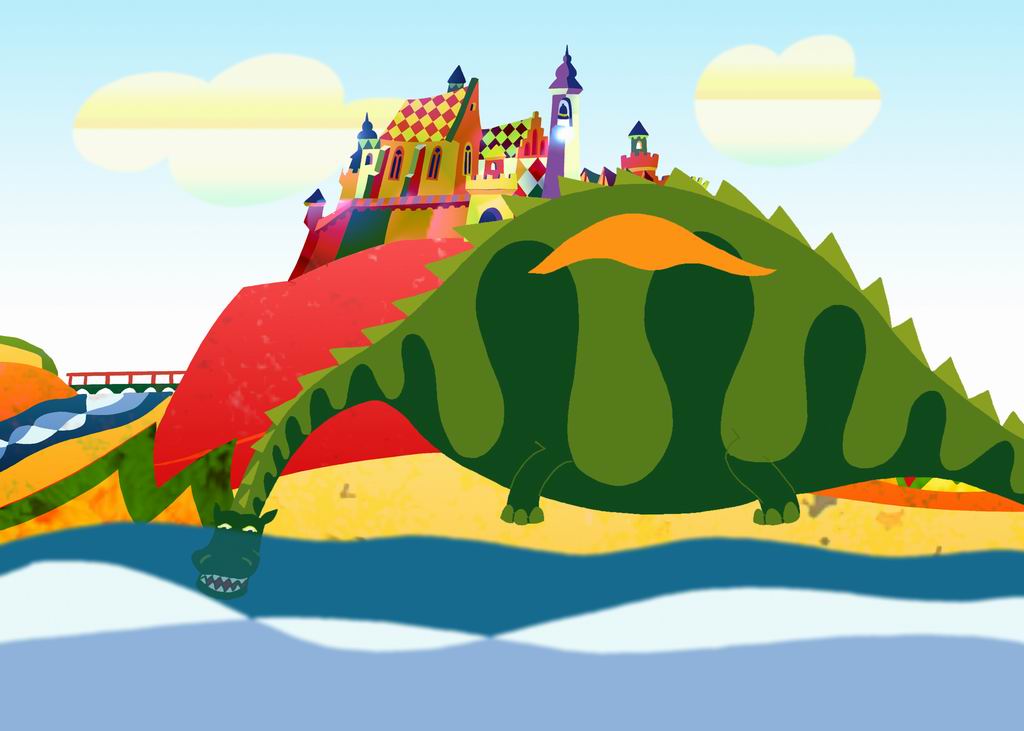Today's topic is fairy tales! Something light that you can read to children. Polish culture is rich in fairy tales and legends that are an integral part of the national identity. Today I will narrate two of my son's favourite fairy tales.
Smok Wawelski - The Dragon of Cracow
Where we can now see the royal castle in Cracow was once the home of a good king who resided in a castle on Wawel hill. Because he was just, honest, and extremely smart about how to lead his people, he was beloved by every person in his country. One day, the reign was horrified by the tragic news. Unexpectedly, a large dragon descended from the sky and made its home in a big cave next to the king's castle. Terrible things have been happening in the neighbourhood ever since the day he arrived in Cracow. He regularly attacked farms and took cattle, lambs, or chickens since he needed large quantities of food every day. But he didn't think that was sufficient. After a while, he gave the order to the resident of the kingdom to bring to him one pretty young girl every morning so he could eat her for breakfast. Otherwise, he would burn the entire city with the fire coming from his belly. How could the people react? They had to consent. The poor king sobbed day and night as he witnessed his people suffering. He suddenly had an inspiration. The adventurer who had the bravery to come and defeat the monster would be rewarded with half of the kingdom and his lovely daughter as a wife. Many heroic young men were drawn to the kingdom and the princess, including warriors, nobles, and princes from other distant regions. Tragically, the dragon was more powerful and easily defeated them all. One day the dragon wanted the princes as his breakfast.
Unexpectedly, a young kid named Dratewka who lived and worked in Cracow and was a common shoemaker entered the castle. He was neither a soldier nor a nobility. The king was so devastated that he allowed him to attempt even though no one believed him he could fight the dragon. The young boy filled the skin of a dead sheep with sulphur and then skilfully stitched it together and attached four sticks that imitated legs. After finishing, he carried the "sheep" inside the cave and set it next to the entry. The creature was there when the dragon awoke in the morning, apparently waiting for him. He knew the princess was coming, but he figured he could start with that sheep. He devoured the meal without thinking it through. After a little while, something unusual inside his stomach began to happen. He hurried to the neighbouring river since he was so thirsty, and he immediately began to drink. He kept drinking more and more, but nothing could relieve his thirst. He drank nearly all of the river's water before blowing like a balloon with a tremendous "pop"! Every part of the kingdom could hear the noise. The king was delighted, the shoemaker received half of his kingdom and the princess was happy to wed her beloved prince. The shoemaker was crowned after the old king passed away and ruled for a very long time.
* Wawel Castle, located on the edge of the Vistula River, has been used as a royal residence for many years. The castle can be visited and inside there is a museum. Underneath the castle, there is the Dragon's Cave connected to the legend, which can also be visited.
 |
| Wawel Castle |
Lech, Czech i Rus - The Polish White Eagle
This is the story of how Poland was created... Once upon a time, Lech, Czech, and Rus were three brothers who lived happily in their villages for many years, but as the families grew, they required bigger living spaces. The brothers chose to go out in different ways in order to look for new residences. Lech, Czech, and Rus spent days on the road with their armies. They travelled on horseback through forests, over rivers, and over mountains. There were no inhabitants anywhere, not even in a small village or town. They split apart on a mountaintop, each heading in a different way. Lech galloped straight ahead, down the mountain, while Czech and Rus turned to the left and to the right, respectively. Lech witnessed a magnificent sight when he and his soldiers arrived at a site where a meadow surrounded a little lake. A big eagle soared over their heads as they came to a stop at the edge of the meadow.
It made large flying rotations before settling into its nest located high over a rock. Lech gaped in amazement at the stunning scenery. Sunlight from the red setting sun shone on the eagle's wings as it extended them out and soared back up into the sky. The rest of the bird was entirely white, but the wings appeared to be tinged with gold. Lech announced, "This is where we're staying." We'll name it GNIEZNO (the eagle's nest). It blossomed into the heart of his realm as a result of the numerous houses that he and his people built. With "People of the Field," they identified themselves as Polonian. They created a flag with a white eagle on a red background and flew it over Gniezno, which was designated as Poland's first ancient capital.
* In Poland, the Polish flag day is celebrated on 2 May. It is made of two colours: white and red. The eagle of our story, is today the coat of arms in Poland.
| Polish flag with the coat of arms |



